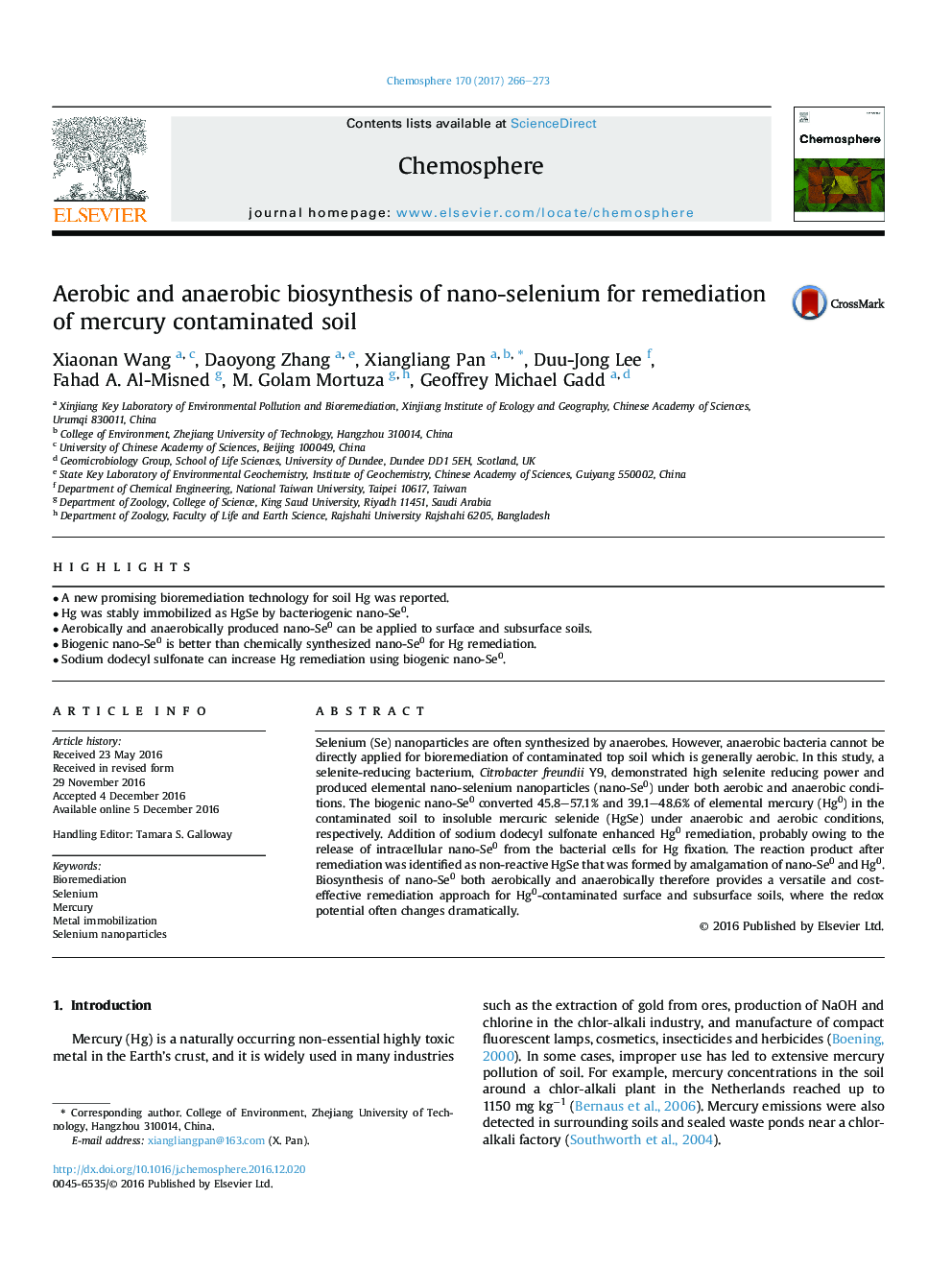| Article ID | Journal | Published Year | Pages | File Type |
|---|---|---|---|---|
| 5746819 | Chemosphere | 2017 | 8 Pages |
â¢A new promising bioremediation technology for soil Hg was reported.â¢Hg was stably immobilized as HgSe by bacteriogenic nano-Se0.â¢Aerobically and anaerobically produced nano-Se0 can be applied to surface and subsurface soils.â¢Biogenic nano-Se0 is better than chemically synthesized nano-Se0 for Hg remediation.â¢Sodium dodecyl sulfonate can increase Hg remediation using biogenic nano-Se0.
Selenium (Se) nanoparticles are often synthesized by anaerobes. However, anaerobic bacteria cannot be directly applied for bioremediation of contaminated top soil which is generally aerobic. In this study, a selenite-reducing bacterium, Citrobacter freundii Y9, demonstrated high selenite reducing power and produced elemental nano-selenium nanoparticles (nano-Se0) under both aerobic and anaerobic conditions. The biogenic nano-Se0 converted 45.8-57.1% and 39.1-48.6% of elemental mercury (Hg0) in the contaminated soil to insoluble mercuric selenide (HgSe) under anaerobic and aerobic conditions, respectively. Addition of sodium dodecyl sulfonate enhanced Hg0 remediation, probably owing to the release of intracellular nano-Se0 from the bacterial cells for Hg fixation. The reaction product after remediation was identified as non-reactive HgSe that was formed by amalgamation of nano-Se0 and Hg0. Biosynthesis of nano-Se0 both aerobically and anaerobically therefore provides a versatile and cost-effective remediation approach for Hg0-contaminated surface and subsurface soils, where the redox potential often changes dramatically.
